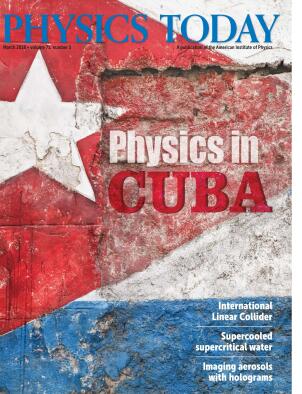Cracking the particle packing
DOI: 10.1063/PT.3.3880
Mud cracks in sediments and soils are familiar examples of fracture patterns that arise when granular materials dry out and shrink. At the tip of a fracture, the surface tension of the air–liquid interface forces particles apart, a process that can be harnessed in industry by injecting gas into wet granular packings. For example, gas-driven, pneumatic fracturing (not to be confused with the hydraulic fracturing used to extract shale gas and oil) can generate conductive pathways that speed up the flushing and treatment of contaminated soil. The feedback between fracturing, particle rearrangement, and fluid flow makes fracturing an extremely challenging problem; at present it is not possible to accurately predict or control fracturing outcomes.

New research by James Campbell, Deren Ozturk, and Bjørnar Sandnes at Swansea University in the UK reveals the role of interparticle friction in shaping the fracture pattern. The
To submit candidate images for Back Scatter visit http://contact.physicstoday.org
